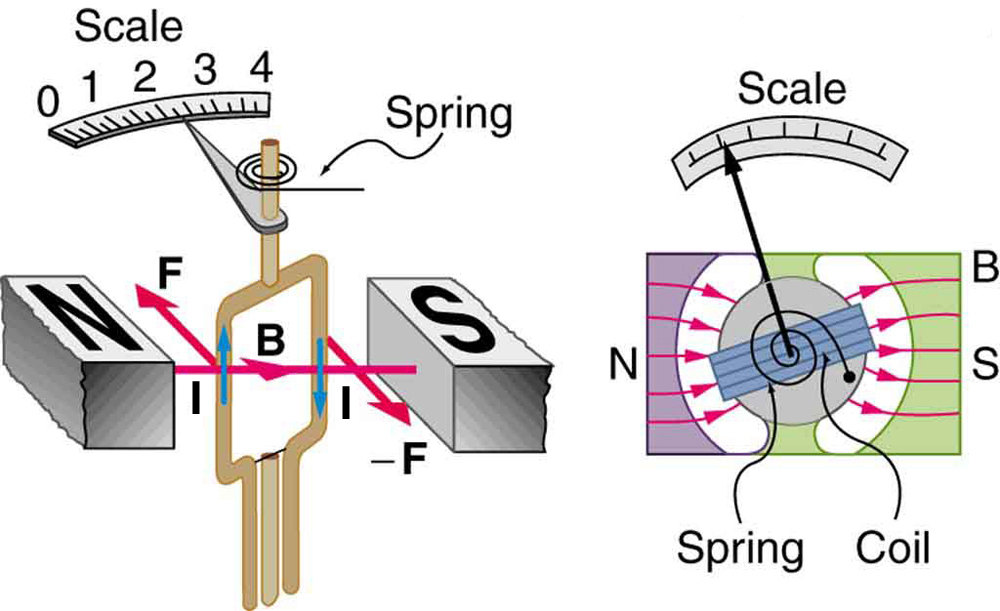Deflecting Force and Deflecting System
Deflecting Force
(i) Magnetic effect
Consider a current carrying conductor of Fig. (a), it produces a magnetic field in the anticlockwise direction. We now have a uniform magnetic field as shown in Fig. (b). Let the current carrying conductor be placed in this magnetic field. The resultant field is as shown in Fig. (c). This results in distortion of magnetic field causing a force F to act from left to right. The reversal of direction of the current will cause a force F in the opposite direction i.e., from right to left subject to the condition that the direction of the existing field remains the same.
If we form the conductor into a coil, the magnetic field produced by each turn of the coil will add up and the coil will behave as an imaginary magnet.
Consider a current carrying coil. It produces an imaginary bar magnet. When a piece of soft iron which has not been previously magnetized is brought near the end of the coil, it will be attracted by the coil. Therefore, if we pivot the soft iron on a spindle between two bearings and a coil is mounted near it, the iron piece will swing into the coil when the latter is carrying current. The effect is utilized in the “attraction type of moving iron instruments.”

If we have two pieces of soft iron placed near the coil the two will be similarly magnetized and there will be force of repulsion between them. This effect is utilized in “repulsion type moving iron instruments.”
(ii) Thermal effect
The current to be measured is passed through a small element which heats it. The temperature rise is converted to an emf by a thermocouple attached to the element. A thermo-couple consists of lengths of two dissimilar electric conductors joined at ends to form a closed loop. If the junctions of the two dissimilar metals are maintained at different temperatures, a current flow through the closed loop. This current can be measured and is indicative of the rms value of the current flowing through the heater elements.
(iii) Electrostatic effect
When two plates are charged, there is a force exerted between them. This force is used to move one of the plates. The instruments working on this principle are called electrostatic instruments and they are usually voltmeters.
(iv) Induction effect
When a non-magnetic conducting pivoted disc or a drum is placed in a magnetic field produced by a system of electromagnets excited by alternating currents, an emf is induced in the disc or drum. If a closed path is provided, the emf forces a current to flow in the disc or drum. The force produced by the interaction of induced currents and the alternating magnetic fields makes the disc move. The induction effect is mainly utilized in ac energy meters.
(v) Hall effect
If a strip of conducting material carries current in the presence of a transverse magnetic field, an emf is produced between two edges of conductor. The magnitude of the voltage depends upon the current, flux density and a property of conductor called “Hall Effect Co-efficient”.
Deflecting System
The deflecting or operating force is required for moving the pointer from its zero position. The system producing the deflecting force is called “Deflecting system or Moving System.” The deflecting force can be produced by utilizing any of the effects mentioned above. Thus, the deflecting system of an instrument converts the electric current or potential into a mechanical force called deflecting force. The deflecting system thus acts as the prime mover responsible for deflection of the pointer.
latest video
news via inbox
Nulla turp dis cursus. Integer liberos euismod pretium faucibua









